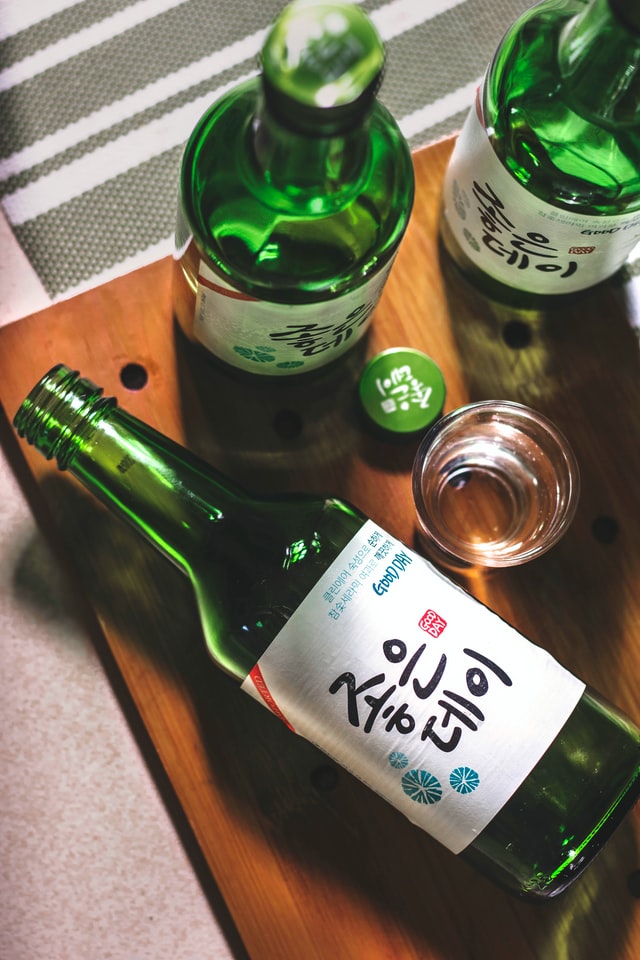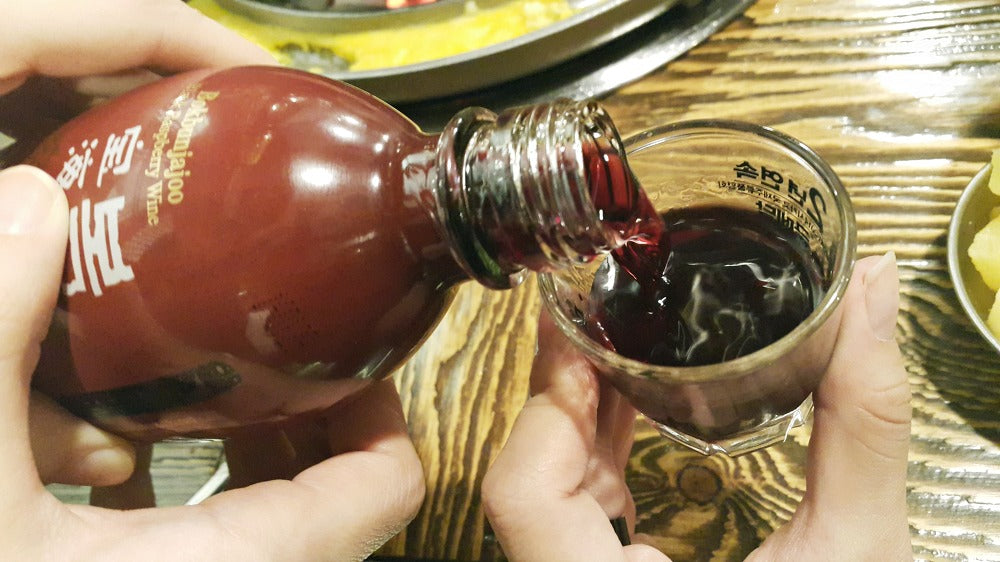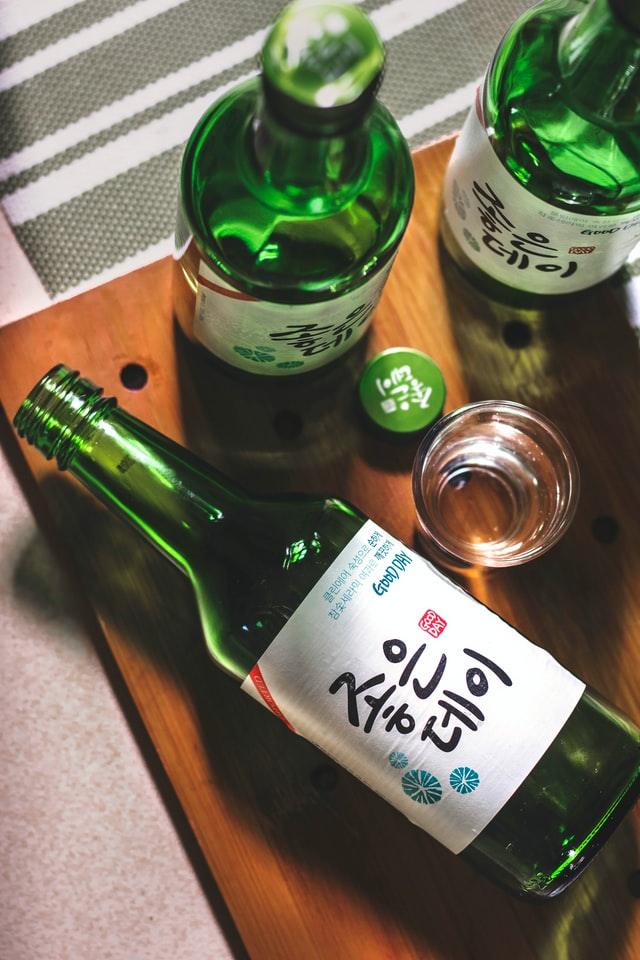Like other east Asian cultures, the consumption of alcohol is a practice dating back thousands of years in Korea. However, it was not until Koryo Dynasty (10th century CE) that Korean alcohol began to form its own, unique identity.
Today, let's take a tour of the best that Korean liquor, wine, and beer have to offer! Whether you’re looking for a sweet Korean red wine, a shot of soju, or another Korean alcoholic drink to pair with Korean cuisine, this list has you covered.

Makgeolli
Makgeolli can be thought of as a “raw” or “original” rice wine. If you've heard of takju before, it was likely in reference to makgeolli. The alcohol does not typically go through distillation, meaning it retains a low ABV, often around that of strong beer: 8%. In Korea, makgeolli is typically not pasteurized, meaning it retains many of its original, earthy, tangy flavors. Most forms will contain a suspension of chalky sediments, making makgeolli appear cloudy.

Soju
Soju is likely the most famous alcoholic beverage produced in Korea, strongly associated with drinking culture on the peninsula. Technically similar to vodka (and the Japanese beverage, shochu), soju is clear; it is distilled from various starches including wheat, glutinous rice, barley, or sweet potato. Traditionally, the majority of the beverage is produced in the Andong region, but smaller producers have began to crop up in the last decade or so. Interestingly, unlike vodka, soju is often produced and sold at a variety of different strengths, ranging from about 15% to 50%! Soju is often consumed in small glasses, slightly larger than the size of a shot glass. For bonus points, try some somaek - it’s a combination of soju and beer that typically incorporates a lager-style of beer and is delicious!

Gukhwaju
Rice wines hold a special place in South Korean drinking culture. Gukhwaju - also known as flower wine - is a traditional rice wine, but with a twist: it is flavored with dry chrysanthemum flowers. These flowers are crushed and added to the rice wine as it is fermenting. This addition adds both a slight tint and herbal flavor to the finished product.

Baekseju
Baekseju can be thought of as herbal rice alcohol. It’s not quite as astringent (or alcoholic) as traditional rice wine, but it retains much of the earthy and chalky flavor. Baekseju is known for its additives. Depending on the producer, it typically contains up to 12 different spices and herbs, notably featuring ginseng, licorice, ginger, and cinnamon.
Dansul
Dansul is another form of Korean rice wine, but it is very different from makgeolli or baekseju. Dansul features the use of “nuruk” - a traditional Korean fermentation starter used since the period of the Three Kingdoms nearly 2,000 years ago. The beverage is unique in that the rice undergoes incomplete fermentation - leaving dansul at an ABV of only 2-3%. Because of this low alcohol content, it is typically sweeter and cloudier than other rice wines.

Beer
While beer (maekju, 맥주; 麥酒) became familiar in Korea somewhat later than in America, it seems as if beer is now a staple of Korean drinking culture. In fact, Seoul has had a brewery for over 100 years! American consumers may be familiar with some of the most popular Korean beer brands, including Hite Jinro and Oriental Brewery. Regulatory changes by the Korean government in 2011 and 2014 have allowed the craft beer industry to expand in Korea, meaning we will hopefully see an influx of high-quality Korean beer in the near future!

Bokbunja-ju
South Korea has a strong wine culture. Interestingly, many of the most distinctive Korean wines are made from fermentables other than grapes. Bokbunja-ju - often called bokbunja wine - is distilled from Korean black raspberries. It is somewhat stronger than a typical American wine, clocking in around 15-19% ABV. The berries add a moderate amount of acidity - allowing bokjunja wine to pair well with many types of seafood.
Maesil-ju
Another famous fruit-inspired Korean alcoholic beverage, maesil-ju is known as a type of plum wine or plum liqueur. Its sweet taste comes from an infusion of yellow or green plums. The spirit is produced by starting with soju, a distilled spirit, and soaking plums in the liquor. The mixture is typically left to age for nearly 100 days, after which the fruit is removed. At this point, sugar is added and the fruit wine is left to age for 3-6 months, although it could be consumed immediately. While it’s not quite as thick as traditional European dessert wines, maesil-ju is definitely sweet enough to fit the bill.
Keywords: South Korea, Korean food, Korean drinks, alcohol, Korean wine, vodka, Korean alcoholic beverages


